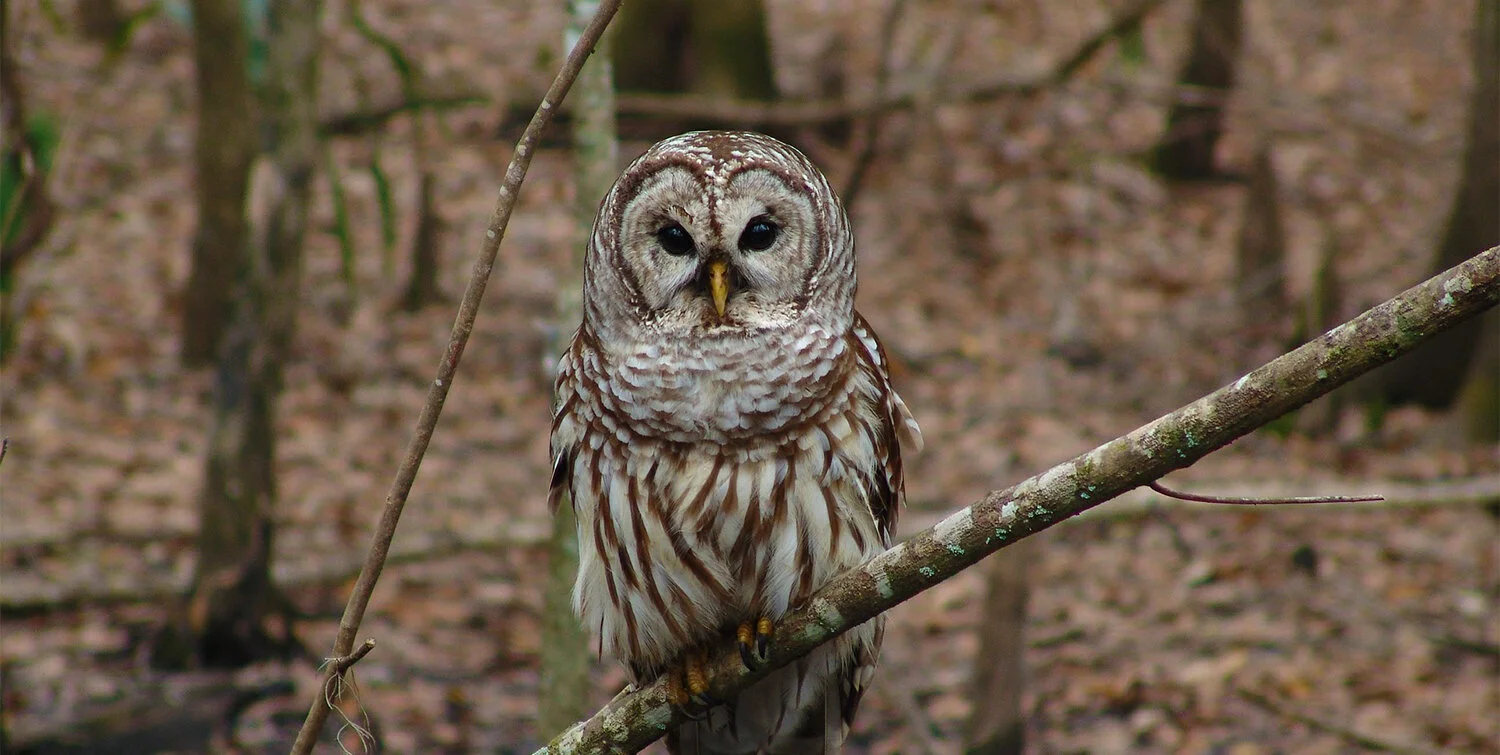Into the Hooting Season with Owls
Into the Hooting Season with Owls
Written by Kristine Manganelli (Somerset County 4-H Coordinator)
Barred Owl
While the arrival of fall and cooler weather makes the landscape bleak, don’t despair! The falling leaves can reveal treasures that are hidden during the rest of the year. October is time for owls to begin preparing for winter breeding by designating nesting territories.
Owls are a type of bird called raptors or “birds of prey,” a category that also includes hawks, eagles and falcons. These birds share characteristics of strong, hooked beaks and talons that they use to catch, kill, and eat prey to survive. Most owls prefer rodents such as voles, mice, and shrews, but some also mix other birds, small reptiles, or amphibians into their diet.
The word raptor is Latin in origin, and means “to seize” as they swoop down and grab their unsuspecting prey. Most owls are nocturnal and hunt at night, so they rely on their incredible senses of vision and hearing to navigate in the darkness.
Owl eyes are not round and mobile like ours, but rather tube shaped and fixed, allowing for binocular vision and increased depth perception. To make up for unmoving eyes, owl necks can swivel 270 degrees. As this position cuts off circulation, back-up arteries supply blood in order to continue powering the brain.
Their ears are located at different heights on each side of the head which enables them to locate sounds with pinpoint accuracy. Other adaptations such as large wingspans, light weight bodies, and fluffy feathers that break up turbulence, allow them to fly silently. These abilities make them extremely successful hunters.
Once captured, owls will swallow their prey whole. They digest the nutritious parts of the prey, and regurgitate the bones, claws, teeth, and fur in the form of undigested pellets which can be found on the forest floor. These pellets are collected and used by educators to teach students about owls. Clues to an owl’s diet can be determined by the various bones discovered inside the pellets.
Great Horned Owl with Prey
Owls are primarily monogamous, meaning they pair with the same partner year after year. They breed in winter, so males are more vocal this time of year as they call to attract mates. Owls are territorial in general, and increasingly so during mating season or when the eggs hatch in the Spring. They will fight other birds and animals to defend their space and their young.
Eight species of Owl live in New Jersey; the Barn, Barred, Great Horned, and Screech owls live in the area year-round, while the Saw-whet, Long-Eared, Short-Eared, and Snowy Owls migrate here in the winter from the North in search for a steadier food supply.
Unfortunately, Barn, Long-Eared, Short-Eared, and Barred Owls are listed as either endangered or threatened species in New Jersey due to loss of nesting habitat. Owls will nest in abandoned nests or in trees with cavities, or snags which are dead trees still standing upright. One way to help increase owl populations is to leave dead trees on your property.
Get Outside
Fall and winter are prime time for spotting owls! As the leaves fall, owls become more visible to us in the trees, and 4 additional species migrate here for the season. You are most likely to see an owl at dawn or dusk, but they can be found napping in trees during the day. As their feathers closely resemble the color of tree bark, this camouflage may make it difficult to locate them.
Winter is considered “hooting season” as males increase their calls to locate a breeding partner. A great way to discover if any owls are nearby is to listen for their call. Visit the Audubon Society to learn 5 common owl calls. You might be surprised to learn that not all owls hoot! They actually have a language with a vocabulary made up of various sounds such as yelps, whistles, barks, and beak snaps. If you hear any of these sounds in your backyard or on a hike, listen to see if you can identify the species.
Sources:
“Owl Spotting in Winter.” November 2019, New Jersey Conservation Foundation, https://www.njconservation.org/owl-spotting-in-winter/. Accessed 9 Oct. 2020.
The Raptor Trust. https://theraptortrust.org/. Accessed 8 Oct. 2020.
Saha, Purbita. “Learn to Identify Five Owls by Their Calls.” October 2015, https://www.audubon.org/news/learn-identify-five-owls-their-calls. Accessed 9 Oct. 2020.


